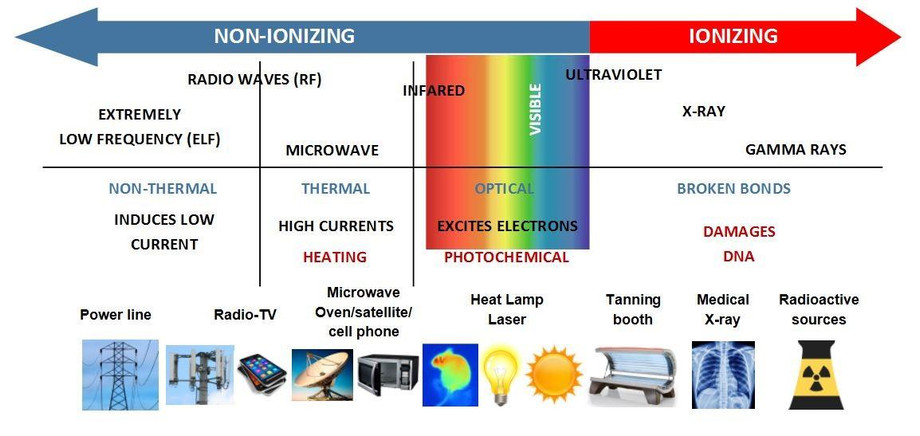When it comes to Radiation, different types have varying degrees of safety. Generally, non-ionizing radiation is considered safer than ionizing radiation.
Non-ionizing radiation includes forms like radio waves, microwaves, and visible light. These types of radiation do not carry enough energy to ionize atoms or molecules, meaning they do not have sufficient energy to remove electrons from atoms. Examples of non-ionizing radiation sources include cell phones, Wi-Fi routers, and household appliances. While prolonged exposure to very high levels of non-ionizing radiation can cause heating effects or tissue damage, the overall risk is considered to be low.
Ionizing radiation
Ionizing radiation, on the other hand, carries enough energy to remove tightly bound electrons from atoms, resulting in the creation of charged particles (ions). This type of radiation includes X-rays, gamma rays, and certain types of particles like alpha and beta particles. Ionizing radiation can damage biological tissues and cells, leading to potential health risks such as cancer and radiation sickness. However, the risk also depends on factors such as the dose, duration of exposure, and the specific type of ionizing radiation involved.
It's important to note that even within ionizing radiation, there are variations in safety. For example, alpha particles, while highly ionizing, can be stopped by a sheet of paper or clothing and pose less risk if not ingested or inhaled. Beta particles can penetrate deeper into the body but can be shielded by materials like aluminum. Gamma rays, on the other hand, are highly penetrating and require thicker shielding, such as lead or concrete, to reduce exposure.
Conclusion
non-ionizing radiation, such as radio waves and visible light, is generally considered safer than ionizing radiation, which includes X-rays, gamma rays, and certain particles. However, it is crucial to understand that all forms of radiation should be handled and used appropriately to minimize potential risks.

